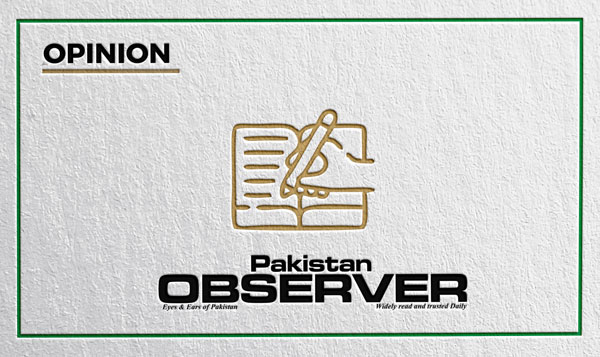Articles and letters may be edited for the purposes of clarity and space.
Eid al-Adha
One of the most significant Islamic festivals observed by the Muslim commu-nity across the world is ‘Eid al-Adha’, often referred to as ‘Bakra Eid’ or the ‘Festival of Sacrifice’. Eid al-Adha commemorates the willingness of Prophet Ibrahim (Abraham) to sacrifice his son as an act of obedience to the Almighty. This event symbolizes unwavering faith, submission and trust in the Creator’s will.
This event is honoured by the act of qurbani, where Muslims around the world perform animal sacrifices, typically of a lamb, sheep, goat or a camel to remember Prophet Ibrahim’s act of faith. It is a time for reflection, gratitude and unity among believers. After the sacrifice, families and friends gather to-gether to savor festive meals in each other’s company.
Eid al-Adha is a time of feasting, where special dishes are prepared and shared. It is not only a time of celebration but also a period of reflection on vir-tues such as sacrifice, charity and community spirit. It serves as a reminder of the faith’s deep humanitarian messages and the importance of sharing and caring in building a cohesive society.
The day begins with Muslims performing the Eid Salah, which is a special prayer offered in the congregation. These prayers are usually held in large open areas or mosques to accommodate the large number of worshippers.
The tradition for Eid al-Adha involves slaughtering an animal and sharing the meat in three equal parts – for family, for friends and for relatives, and also for the poor people in the area, no matter what religion they belong to. The goal is to make sure every person gets to eat meat on that day.
Eid al-Adha enjoys special significance because the Day of Sacrifice marks the climax of Hajj or Pilgrimage, the fifth pillar of Islam.
— Jubel D’Cruz,
Mumbai, India
Budget 2024: unrealized
economic vision
The PML(N) led an alliance government still followed last year’s mantra of appeasing the IMF as it presented its first budget after being elected to power. With a projected net tax revenue of Rs 1.76 trillion, the budget presented by the government focuses on expanding the tax base and targeting non-filers with a carrot-and-stick approach. While those who understand that “beggars can’t be choosers” would try to hail this as a heroic feat in the face of mounting debt, the reality cannot be swept under the rug. Budget 2024 is a mere shadow of what could have been a revolutionary economic plan for the country. Despite promises of reforms and progress, the government seems to have fallen short in delivering a comprehensive and sustainable plan for economic growth. The budget, instead of being a beacon of hope, comes off as a band-aid solu-tion to deep-rooted problems. However, what about the resolve to focus on a home-grown, export-led model, touted to re-package Pakistan as a roaring lion on the world map? Even for the sake of the roadmap, if not the consequences for the bigger picture, simply restricting itself to the taxation targets would not magically make all sectors turn their attention towards their civic duty. The government may force the salaried class to bleed a little more at the altar, but reduced inflation means wiping off the ex-tra boost of revenue to the taxation net. What on God’s green earth would change in the setup that forces the authorities to implement his ambitious plan? Although the government does not have a hefty amount for development, its top priority should be to make life as easy as possible for Pakistanis.
QAZI JAMSHED ALAM SIDDIQUI
Lahore
Improving Pakistan Cricket
The Pakistan cricket team, currently ranked 4th in ICC Test rankings and 6th in ODI rankings, boasts a rich history of producing talented players such as Wasim Ak-ram, Waqar Younis and Saeed Anwar. To further develop the sport in Pakistan, creat-ing a nurturing environment is essential. This can be achieved by investing in grass-roots infrastructure, establishing schools and academies and promoting cricket at the district level. Initiatives like talent hunts, coaching clinics and domestic leagues can help identify and groom young talent. By fostering a strong foundation, Pakistan can continue to produce world-class cricketers and remain a formidable presence in inter-national cricket.
Pakistan’s cricket team currently lags behind the top teams in the world. To im-prove, we need a robust basic structure for cricket in our country. Our current system falls short of enabling us to achieve the top position. Firstly, we need a comprehensive training system for our players. Introducing a specialized sports degree for aspiring cricket players and other athletes would be beneficial. This degree program would in-clude classroom learning of cricket rules and strategies in the first year, followed by practical training on the field in the second year. Many players in the Pakistan cricket team lack adequate education. Education enhances strategic planning, game strategies, and decision-making abilities, which are crucial for success in cricket. Umar Bhayo
Kandhkot










